Esercizio 2
Nell'esercizio seguente puoi mettere alla prova la tua capacità di identificazione degli eventi. Abbiamo scelto dieci esempi. Li puoi scaricare in formato elettronico da qui. Nelle Masterclass Internazionali li troverai già sul desktop del tuo computer. Vanno letti tramite il programma MINERVA (usando "Read Event Locally").
Il tuo compito consiste nel distinguere eventi di segnale da quelli di fondo. Gli eventi di segnale sono eventi in cui viene prodotto esattamente un W. In questi eventi dovrai anche capire se la particella W sia decaduta in un elettrone o positrone o muone o anti-muone e il neutrino (o anti-neutrino) associato. Eventi con jet, particelle Z e coppie di quark top sono considerati eventi di fondo.
Puoi verificare i tuoi risultati usando la tabella sottostante. Scegli quello che ritieni essere il processo responsabile di ogni evento. Cliccando su "compare results" otterrai il numero di eventi identificati correttamente. Cliccando su "Correct Answers?" potrai vedere le risposte corrette.
Divertiti con questo test!
-
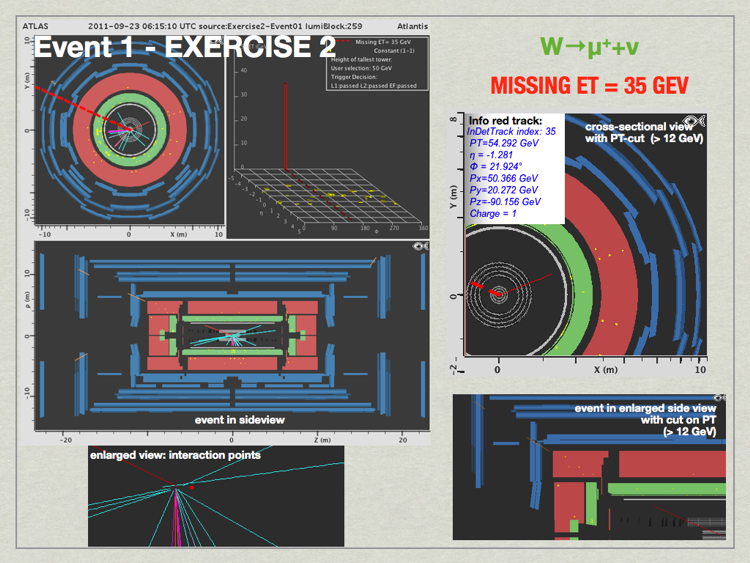 MINERVA can only display information on muons in cross-sectional view if the muon travels through the barrel region. In this example the muon leaves in forward direction and thus can only be identified with help of the side view. Tracking and calorimeter information is available in cross-sectional view though.
MINERVA can only display information on muons in cross-sectional view if the muon travels through the barrel region. In this example the muon leaves in forward direction and thus can only be identified with help of the side view. Tracking and calorimeter information is available in cross-sectional view though.
-
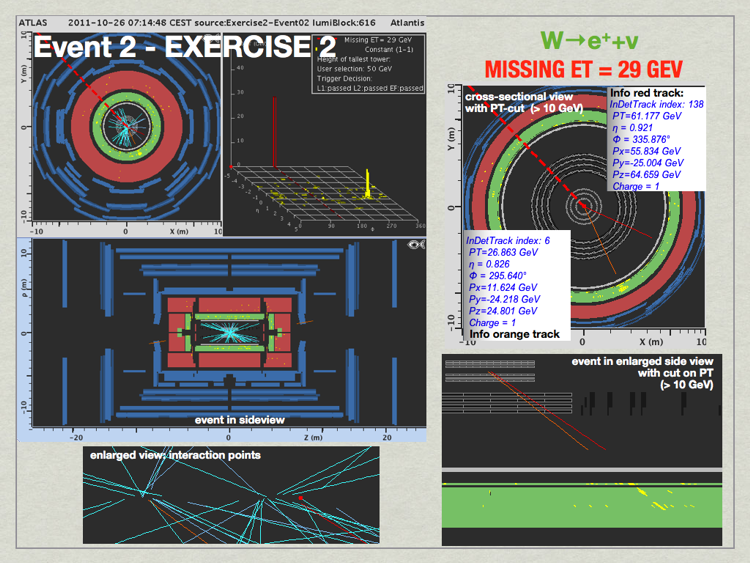 The red track cannot be identified as an electrically charged lepton, arisen from a different vertex (compared to the positron shown with orange track) and is thus not of interest.
The red track cannot be identified as an electrically charged lepton, arisen from a different vertex (compared to the positron shown with orange track) and is thus not of interest.
-
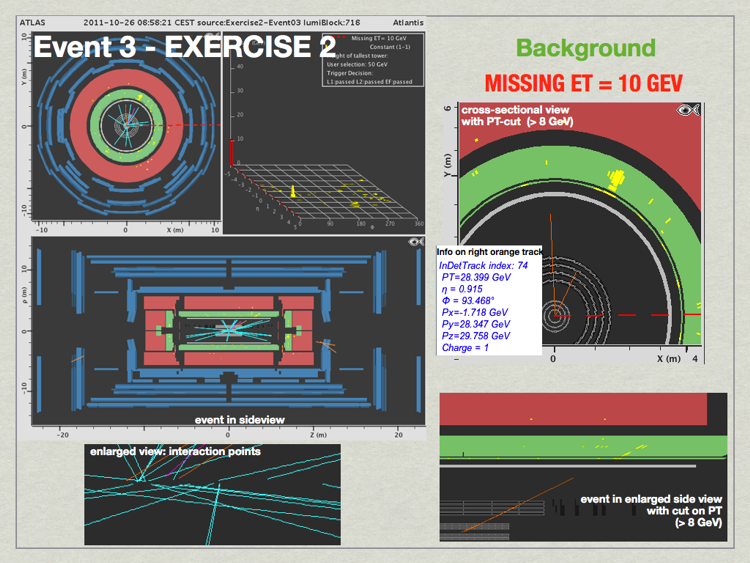 Missing transverse energy is too little.
Missing transverse energy is too little.
-
 Missing transverse energy is too little. Electron candidate (orange track) is not well isolated from electrically charged particles around.
Missing transverse energy is too little. Electron candidate (orange track) is not well isolated from electrically charged particles around.
-
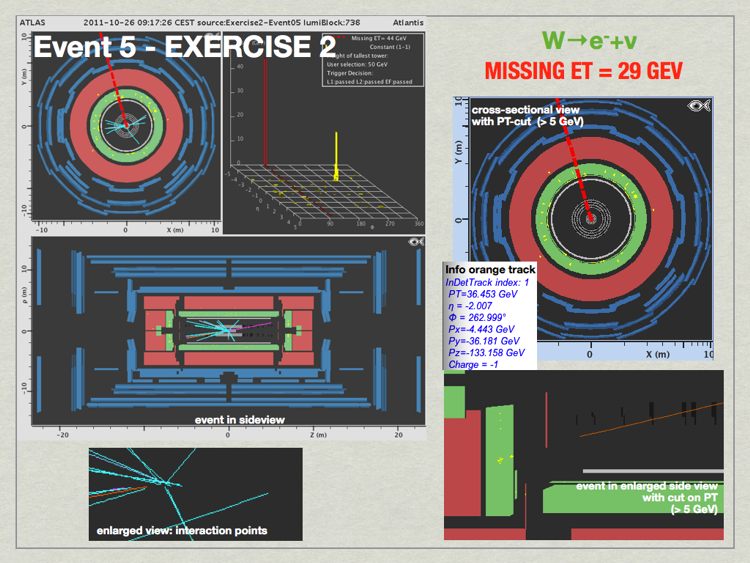 MET>25 GeV, there is exactly one electron (electric charge = -1) in the event, well isolated. It is not visible in cross-sectional view since it moves in forward direction but can be clearly identified in side view.
MET>25 GeV, there is exactly one electron (electric charge = -1) in the event, well isolated. It is not visible in cross-sectional view since it moves in forward direction but can be clearly identified in side view.
-
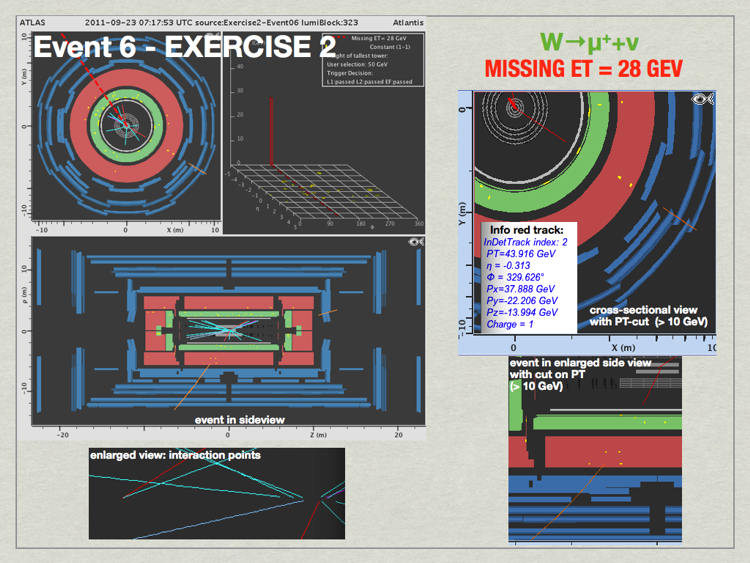 MET>25GeV, there is exactly one anti-muon (electric charge = 1) arising from the right vertex (see enlarged side view on bottom left), well isolated, with PT>20GeV.
MET>25GeV, there is exactly one anti-muon (electric charge = 1) arising from the right vertex (see enlarged side view on bottom left), well isolated, with PT>20GeV.
-
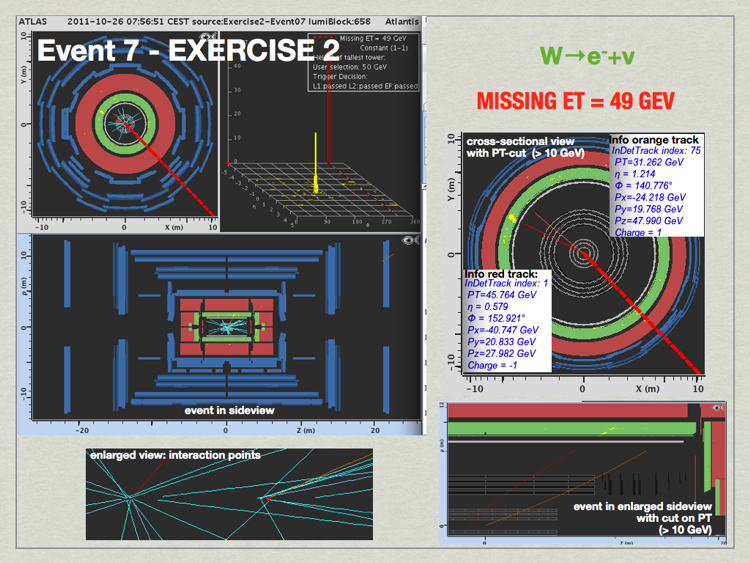 MET > 25 GeV. Two hight-PT, isolated tracks arising from two vertices. Only the red track (PT > 20 GeV) can be combined with calorimeter clusters and thus identified as electron (electric charge = -1).
MET > 25 GeV. Two hight-PT, isolated tracks arising from two vertices. Only the red track (PT > 20 GeV) can be combined with calorimeter clusters and thus identified as electron (electric charge = -1).
-
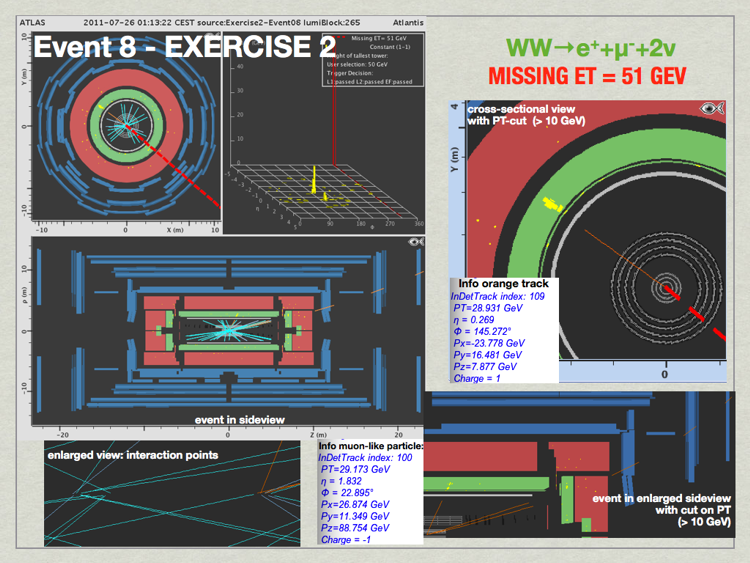 MET > 25 GeV, there are exactly two, oppositely electrically charged leptons in the event (a positron and a muon), both are well-isolated from Jets. The muon can only be identified in side view since it moves in forward direction. There is also another high-PT track in the event, which cannot be assigned to third electrically charged lepton.
MET > 25 GeV, there are exactly two, oppositely electrically charged leptons in the event (a positron and a muon), both are well-isolated from Jets. The muon can only be identified in side view since it moves in forward direction. There is also another high-PT track in the event, which cannot be assigned to third electrically charged lepton.
-
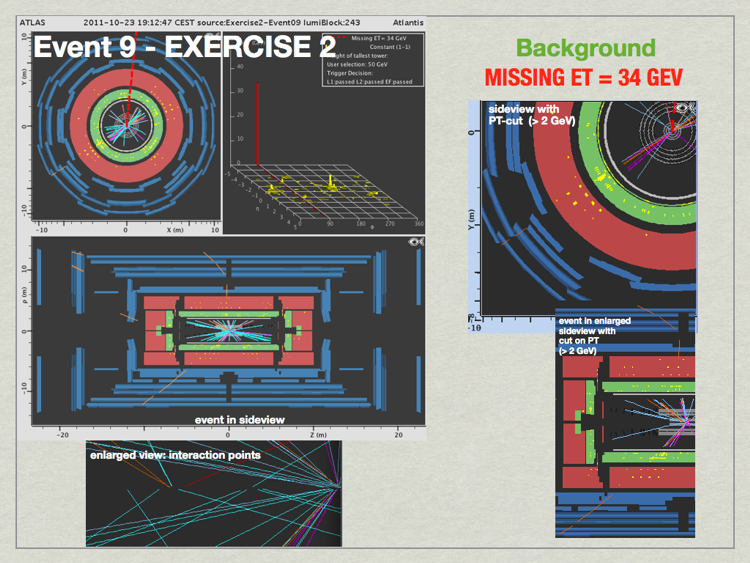 Possible muon candidates are not isolated from Jets.
Possible muon candidates are not isolated from Jets.
-
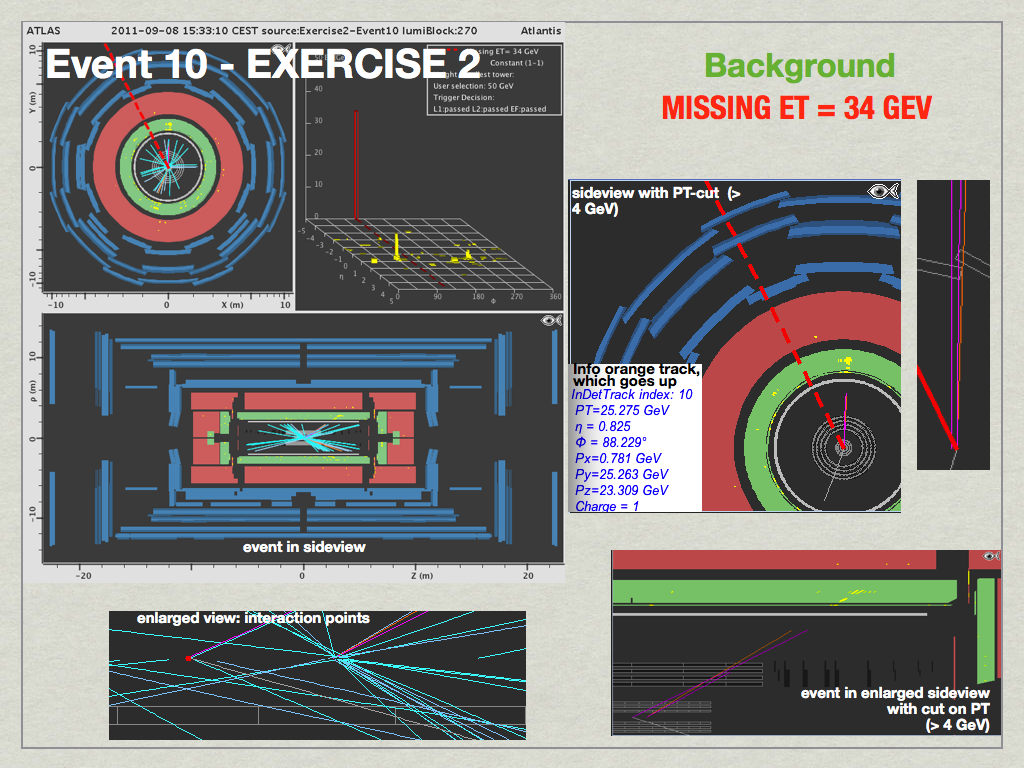 There are two orange tracks in the event. The one that can be combined with clusters in the calorimeter goes up in cross-sectional-view. It is overlaid by a purple track, whose accompanying particle was produced so close to our electron candidate, that we cannot really say it was isolated (look at the enlarged views).
There are two orange tracks in the event. The one that can be combined with clusters in the calorimeter goes up in cross-sectional-view. It is overlaid by a purple track, whose accompanying particle was produced so close to our electron candidate, that we cannot really say it was isolated (look at the enlarged views).










